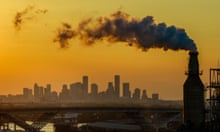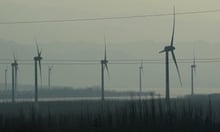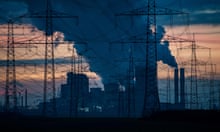Global carbon dioxide emissions are still rising but may at least be reaching a plateau, research from the International Energy Agency has shown.
CO2 from energy – by far the biggest source of emissions – increased by less than 1% in 2022. This was despite the turmoil in energy the markets caused by Russia’s invasion of Ukraine.
The rise is smaller than the 6% increase in emissions from energy recorded by the IEA in 2021, a leap that came on the back of the rebound from the Covid-19 pandemic.
However, a 7% reduction is needed every year to meet the goal of halving emissions this decade.
Many experts had feared the soaring price of gas could push countries back towards using coal, which has much higher carbon emissions. But renewable energy seems to have been a big beneficiary, as countries opted for solar and wind power, and encouraged the take-up of heat pumps and electric vehicles (EVs). A mild start to Europe’s winter also helped to save energy across the EU.
Even a small increase in greenhouse gas emissions takes the world much further away from the path to net zero , the goal needed to limit global temperature rises to 1.5C above pre-industrial levels.
Scientists have warned emissions need to fall by nearly half in this decade, if the world is to have a good chance of holding to the 1.5C limit.
Fatih Birol, the executive director of the IEA, which is the global gold standard for energy research, said: “The impacts of the energy crisis didn’t result in the major increase in global emissions that was initially feared, and this is thanks to the outstanding growth of renewables, EVs, heat pumps and energy-efficient technologies. Without clean energy, the growth in CO2 emissions would have been nearly three times as high.”
But he added: “We still see emissions growing from fossil fuels, hindering efforts to meet the world’s climate targets. International and national fossil fuel companies are making record revenues and need to take their share of responsibility, in line with their public pledges to meet climate goals.”
The findings from the IEA will be discussed this November at the next UN climate summit, Cop28 in Dubai, where for the first time countries will be required to compile a “global stocktake” under the 2015 Paris agreement.
This will set out clearly that the world is far off track to meet the goal agreed in Paris of holding temperature rises “well below 2C”, while “pursuing efforts” to keep them below 1.5C.
Since the Paris agreement was signed, science from the Intergovernmental Panel on Climate Change has shown more clearly the dangers of exceeding a 1.5C rise, which could trigger a cascade of catastrophic impacts including the melting of Arctic ice, the drying out of rainforests and the release of methane. The final report from the latest round of IPCC research will be published later this month and is expected to show the world is on the verge of exceeding the 1.5C goal unless far greater efforts are made to cut emissions.
The IEA found global energy-related CO2 emissions grew in 2022 by 0.9%, or 321m tonnes, reaching a new high of more than 36.8bn tonnes. It noted that this rate was below that of economic growth, suggesting countries were successfully “decoupling” economic growth from emissions.
The growth of renewable energy and clean technology reduced emissions by about 550m tonnes, the IEA said.
Emissions from coal grew by 1.6% last year. This was less than feared but much more than was consistent with the “phase down” of coal power that was agreed at Cop26 in Glasgow in 2021.
Emissions from oil grew by 2.5%, in part owing to the rebound in aviation after the Covid lockdowns.










